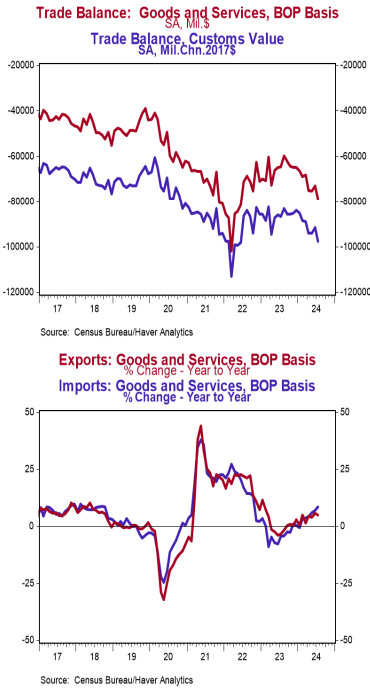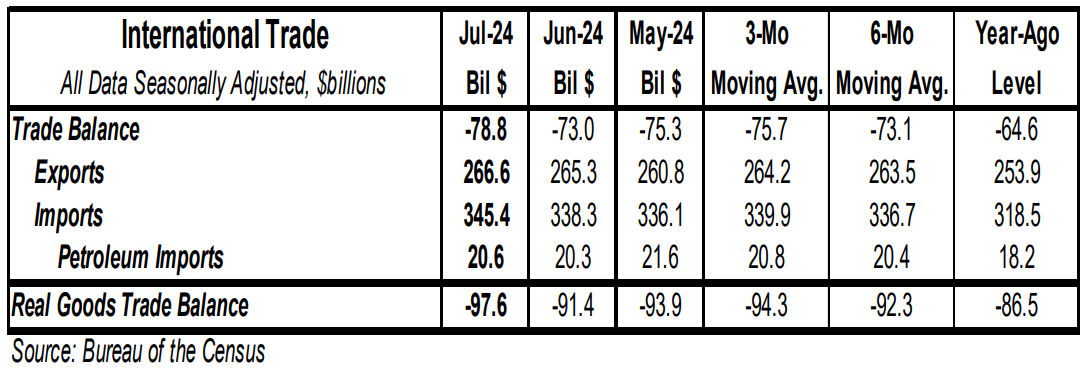- The trade deficit in goods and services came in at $78.8 billion in July, slightly smaller than the consensus expected $79.0 billion.
- Exports rose by $1.3 billion, led by semiconductors, civilian aircraft, and computer accessories. Imports rose by $7.1 billion, led by computer accessories, nonmonetary gold, and finished metal shapes.
- In the last year, exports are up 5.0% while imports are up 8.4%.
- Compared to a year ago, the monthly trade deficit is $14.2 billion larger; after adjusting for inflation, the “real” trade deficit in goods is $11.1 billion larger than a year ago. The “real” change is the trade indicator most important for measuring real GDP.
Implications: The trade deficit in goods and services ballooned to a two-year high of $78.8 billion in July as imports grew much faster than exports. However, we prefer to focus on the total volume of trade, imports plus exports, as it shows the extent of business and consumer interaction across the US border. This measure increased sizably in July, rising by $8.4 billion. Total trade volume is up 6.9% from a year ago, with exports up 5.0% and imports up 8.4%. Although the pickup in imports is good news, part of this is being pulled forward as companies make sure they have adequate supplies before a potential dockworkers’ strike by East and Gulf Coast workers. There also continues to be a major shift going on in the pattern of US trade. Year- to-date through July, imports from China were up only 0.1% versus the same period in 2023 and down 24.8% versus the same period in 2022. China used to be the top exporter to the US. Now the top spot is held by Mexico; China has fallen to number three with Canada now in second place. Meanwhile, global supply chain pressures have eased substantially over the past few years. This was confirmed by the New York Fed’s Global Supply Chain Pressure Index in July, with the index -0.09 standard deviations below the index’s historical average. For some perspective, two years ago in the month of July the index sat 1.80 standard deviations above the index’s historical average. Also in today’s report, the dollar value of US petroleum exports exceeded imports once again. This marks the 26th consecutive month of the US being a net exporter of petroleum products.





